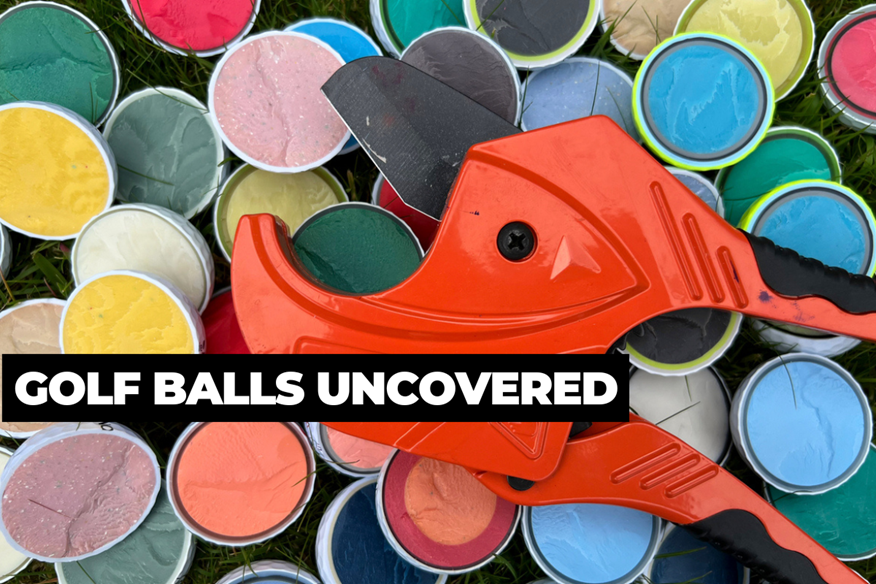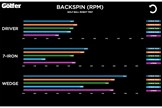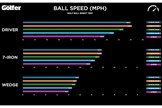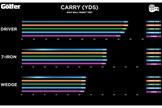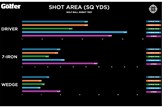Cutting to the core: The must-see data before you buy your next box of golf balls!
Last updated:
How important is the number of layers to golf ball performance? We robot-tested 22 models to help you decide if your money could be spent more wisely.
If you are anything like me before a round, you have to ask yourself honestly if the five sad-looking, and often inherited, balls at the bottom of your bag will be sufficient to get you around 18 holes.
Invariably I head back to the Pro Shop and scout around the counter for a good deal on a brand with gravitas that sells me a promise of monster distance or extreme spin.
But with club golfers losing an average of 1.3 balls per round, a realistic annual golf ball budget could rise north of $350/£300 based on playing once a week, presuming your Christmas stocking fillers aren’t fruitful. You could have your pick of the best fairway woods for that money, and no doubt you would spend more than 60 seconds on that decision.
It’s also important to remember that the seemingly nondescript-looking golf ball is the only piece of equipment you use every shot. It’s time to look beyond that hard exterior and peel back the layers. Only then will you find it’s what’s on the inside that counts…toward your score anyway.

Jump To:
- Constructions explained
- Ball speed results
- Backspin results
- Carry distance results
- Shot area results
- Final verdict
It’s all a question of layers
Knowing whether a two, three, four, or even five-piece ball is best for your game can be a bit of a minefield. Each construction has its own merits and compromises when it comes to performance characteristics, and those should ideally be weighed up against the strengths and weaknesses of your game, and of course, your budget.
It’s why finding the best golf ball for your game is a far more nuanced question than you might think, and before forking out £50/$55 on the latest tour-level offering from powerhouse golf ball brands, take a moment to consider your exact requirements. You might just be surprised at some less familiar names competing in the areas you need them to, and for a significantly lower price point.
But before we dive into the data, here’s what you need to know about the four categories of golf balls we analyzed, and the models tested.
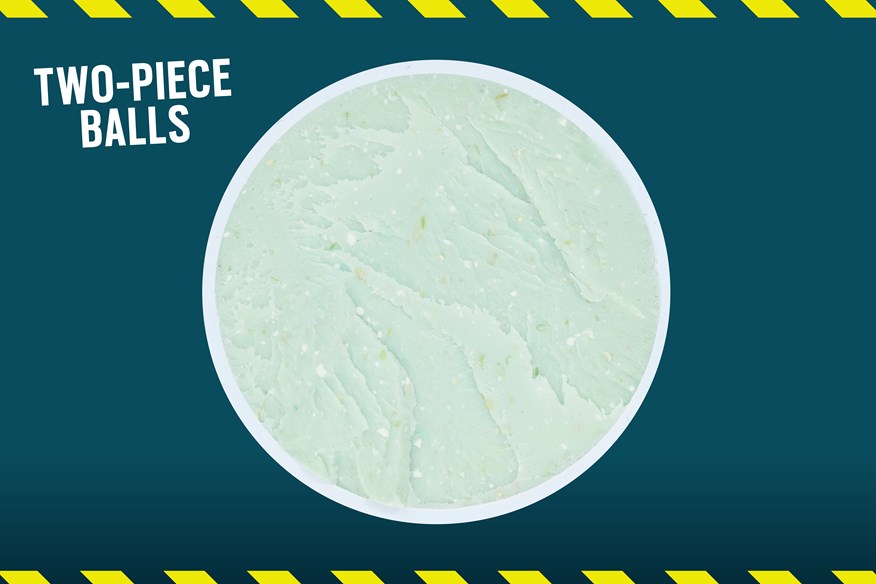
Traditionally two-piece balls have a huge core under a thick ionomer or surlyn cover, as opposed to being clad in premium urethane. That said, our 2024 sample included the Snell Prime 2.0, the first ball we’ve ever tested with a urethane cover.
Two-piece balls are the least expensive balls on the market but can still offer a choice between softer feel and longer distance.
| Ball | Cover | Category |
| TaylorMade SpeedSoft | Ionomer | Under £30 (£24.99) |
| Srixon AD333 (2024) | Ionomer | Under £30 (£28) |
| Srixon Distance | Ionomer | Under £30 (£20) |
| Snell Prime 2.0 | Urethane | Under £30 (£23.99) |
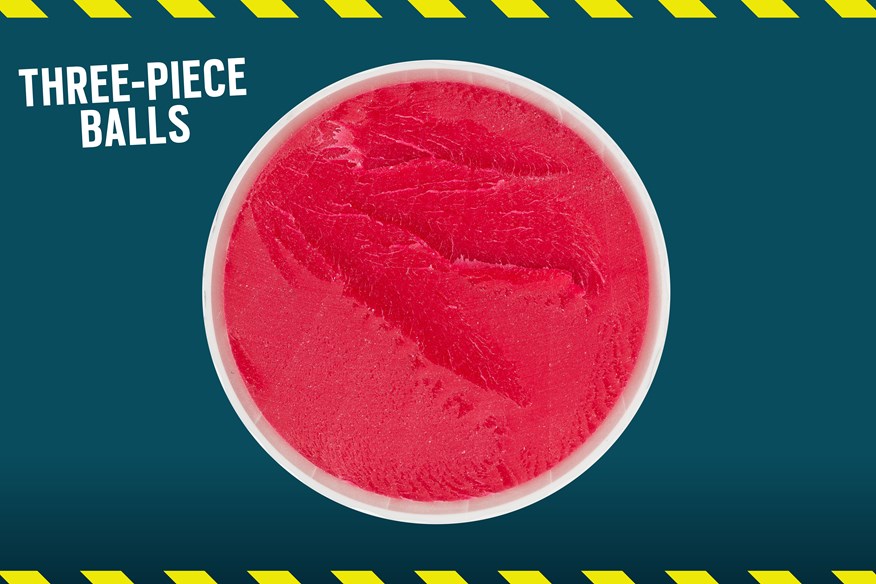
Three-piece models accounted for 42% of our sample reflecting the popularity of this construction with both club and tour level golfers. The core size is shrunk to allow a mantle layer to sit between the core and outer cover, enabling engineers to dial in different characteristics based on the needs of the target player.
The three-piece category is typically where you will find the biggest variation in cost, covering premium tour level balls such as the Titleist Pro V1 through to lower compression models aimed at the club golfer. Within this category is also where direct-to-customer brands such as Vice and Seed are also building traction. We’re unlikely to see them featuring on the PGA Tour anytime soon but they are increasing in popularity as competitors to more established retail models such as the Callaway Chrome Soft and Srixon Q-star Tour.
| Ball | Cover | Category |
| Titleist Pro V1 (2023) | Urethane | Premium tour level |
| Seed SD-01 The Pro 1 | Urethane | DTC Tour level |
| Seed SD-X1 The Pro X1 | Urethane | DTC Tour level |
| Vice Pro | Urethane | DTC Tour level |
| Snell Prime 3.0 | Urethane | Club golfer |
| Kirkland Signature V3 | Urethane | Club golfer |
| Callaway Chrome Soft (2024) | Urethane | Club golfer |
| Srixon Q-Star Tour (2024) | Urethane | Club golfer |
| Vice Pro Air | Urethane | Club golfer |
| Vice Tour | Surlyn | Budget |
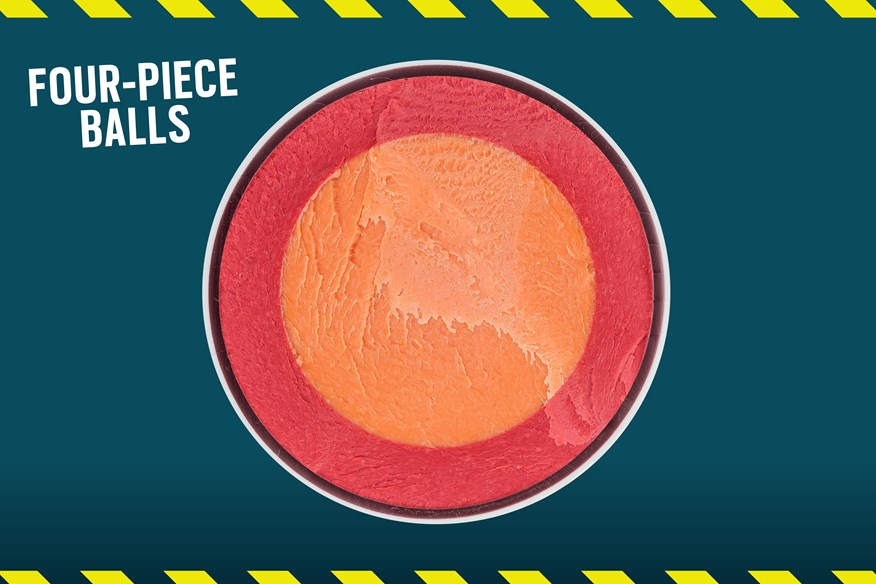
The firmer four-piece model, often post-fixed with an ‘X’ are constructed with two mantle layers between the cover and core and are traditionally the fastest, longest and lowest spinning balls on the market.
Our test data demonstrates that this isn’t always the case, however. Pitching Titleist’s Pro V1 and Pro V1x head-to-head showed that the four-piece model actually produced higher spin rates with 7-iron and wedge compared to its softer sibling. It’s just one of several interesting results that is starting to objectively inform our buying advice when it comes to choosing a golf ball.
| Ball | Cover | Category |
| Titleist Pro V1x | Urethane | Premium tour level |
| Callaway Chrome Tour | Urethane | Premium tour level |
| Callaway Chrome Tour X | Urethane | Premium tour level |
| Wilson Staff Model (2024) | Urethane | Premium tour level |
| Wilson Staff Model X (2024) | Urethane | Premium tour level |
| Seed SD-02 The Pro Tour | Urethane | DTC Tour level |
| Vice Pro Plus | Urethane | DTC Tour level |
| Snell Prime 4.0 | Urethane | DTC Tour level |
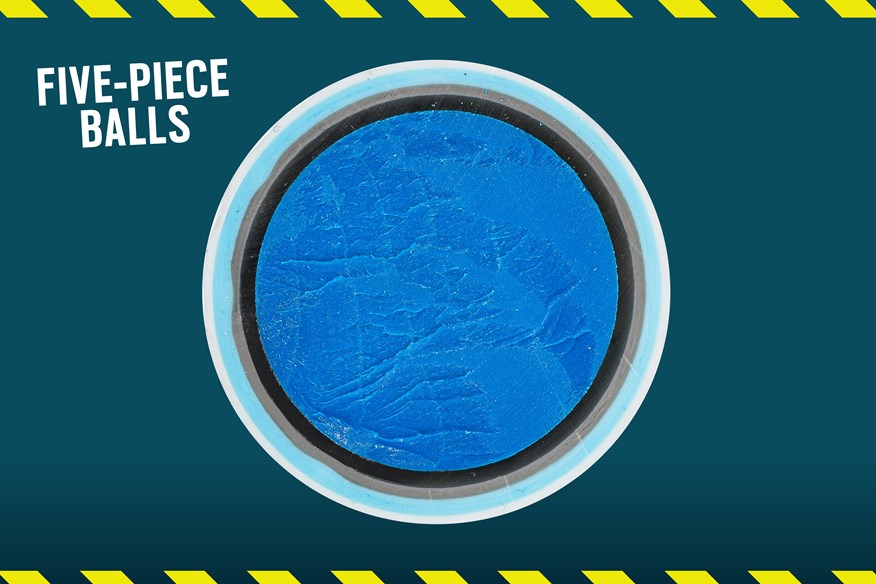
At present, TaylorMade is the only brand who have added a third layer between the core and cover to create the firmest feeling balls on the market, used by a healthy number of top tour pros including Rory McIlroy, Collin Morikawa and Nelly Korda.
The five-piece construction enables engineers more knobs and levers to tweak to dial down driver spin, up launch, or maximize wedge spin. The firmer feeling TP5x is said to be faster, longer, and launches higher, whereas the TP5 offers a little extra wedge spin, more feel, and some extra shot-shaping potential.
| Ball | Cover | Category |
| TaylorMade TP5 (2024) | Urethane | Premium tour level |
| TaylorMade TP5x (2024) | Urethane | Premium tour level |
That’s the theory anyway, but did it ring true when we put the balls to the sword in our Golf Ball Robot Test? Let’s dive into the data and pull out the results we think are worthy of further discussion and could help you make a more informed decision when trying to find the right ball for your game, at the right price.
The Data
Ball Speed
The data supports that firmer is indeed faster when it comes to ball speed with four and five-piece constructions producing the fastest speeds off the face, cascading down proportionally with fewer layers. This was consistent across driver, 7-iron, and wedge which may be comforting for high-level players looking to eke out every last 0.1 mph, although in reality, the robot averages were very tight (< 1 mph), meaning you should really dive into the individual ball data before making a decision based on speed alone.
At driver swing speeds of 100 mph+, the Wilson Staff Model X produced the fastest ball speeds and was second only to its lower compression sibling, at 85 mph swing speeds. Only the Callaway Chrome Tour X has the speed to compete at this level. For those seeking speed at a more affordable price point, then the four-piece Seed SD-02 should be on your radar, as should the Vice Pro Plus for slower swinging players off the tee.
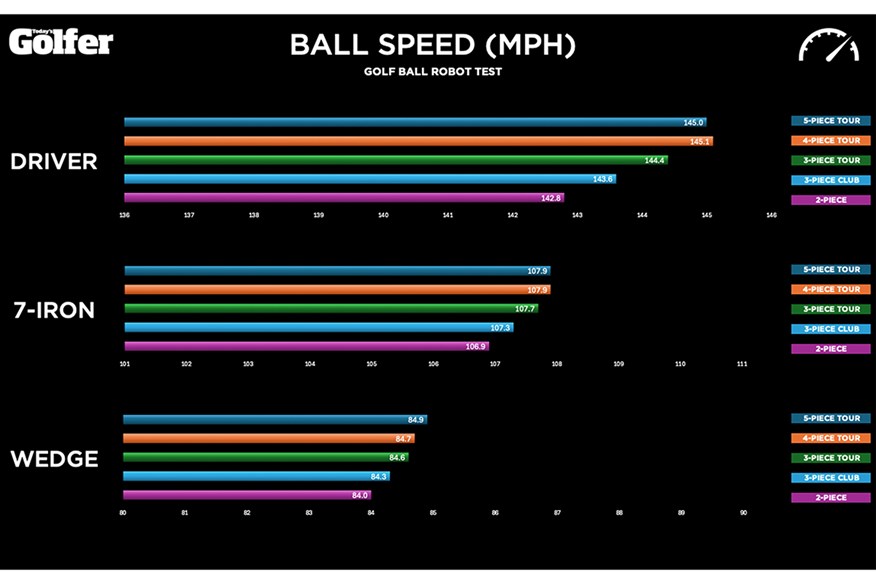
Backspin
Choosing a ball based on one variable alone can be a fool’s errand given that you need to find a balance of performance throughout your bag. For example, a lower spinning ball designed to maximize driver distance can compromise stopping power when hitting into greens with a mid-iron or wedge which is likely to be detrimental for many club-level golfers.
The results for each construction showed tour-level models to produce more backspin across the bag than three-piece balls targeting club golfers. A standout finding from our data, however, was the super competitive performance of two-piece golf balls in the backspin department, out-spinning three-piece tour-level balls with 7-iron and wedge.
Digging a little deeper we were excited to see that the Snell Prime 2.0, with its urethane cover, was punching massively above its weight/price, pulling up the average of the category. As mentioned, this was the only two-piece ball in our test cladded with the premium material usually reserved for models with three-plus layers.
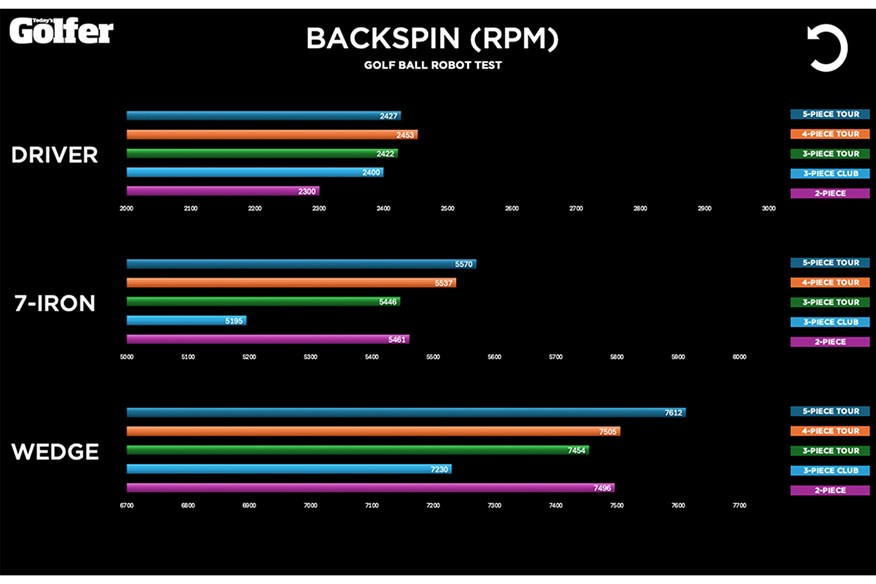
As TG Equipment Editor Simon Daddow says: “If value for money and ability to score well come higher on your priority list than squeezing out every last yard, the Prime 2.0 is a fantastic choice. Offering just 133 rpm less iron and 74 rpm less wedge spin than a Pro V1, it can only be a matter of time before other brands start introducing urethane covers to their two-piece golf balls.”
Our take-home from this backspin construction data once again reaffirms our long-standing belief that firmer ‘X’ style balls should be the way forward over softer three-piece models at the same price point. Unless you have a pro-level feel, we can’t see a tangible benefit to your game, and your scorecard will likely be more grateful for the faster and higher-spinning X models that provide more stopping power.
Carry Distance
Our carry data showed four and five-piece models to travel over six yards further with driver on average than two-piece balls, and almost three yards further than club-level three-piece constructions. The 7-iron and wedge data showed the construction differences to be much tighter, suggesting you once again need to dig into the individual data to understand which models deliver an extra bump in yardage.
At 156.5 yards on average, the Srixon Q-Star Tour and Vice Pro Air delivered the longest carry distance with a 7-iron. Both models fit within our three-piece club-golfer category and appear a good-value option for those looking to hit the shortest club possible into greens. Unfortunately, however, both models can be found languishing at the bottom of our backspin rankings, meaning that stopping power and score ability will be compromised.
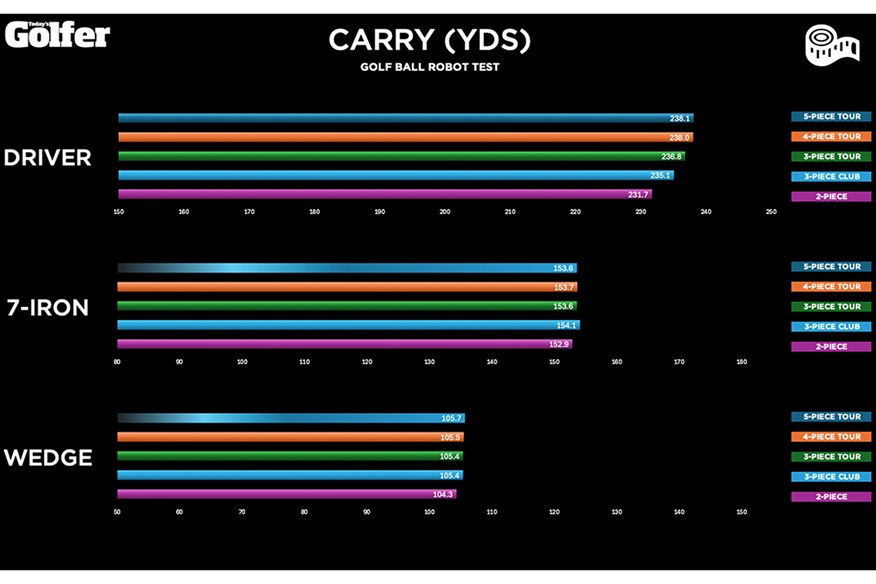
At just 11p a yard, the Seed SD-01 may offer a more attractive balance. Across the board, the SD-01 was longer than the Titleist Pro V1 in all five test situations while also producing a more than respectable 5,314 rpm of backspin with a 7-iron and 7,275 rpm with a wedge. And while this stopping power is approximately 5% less than the market leader, it should in no way be a deal breaker and we would suggest seriously looking at the SD-01 if distance is your priority.
Taking distance off the tee in isolation, the Wilson Staff Model for slower swing speeds, Vice Pro Plus for medium speeds, and the Callaway Chrome Tour X for faster players, all topped the carry charts.
Shot Area
Shot area was the metric where two-piece constructions failed to deliver a competitive performance in our testing. It was also the metric that posed the most questions in terms of repeatability for both us and Loughborough University due to the higher levels of variability observed. We speculate that differences in the engineering methods used to seal each ball could be a contributing factor.
Interestingly though, our much-heralded Snell Prime 2.0 beat the shot area test averages in all but the 115 mph driver category, which it wouldn’t have been designed for anyway.
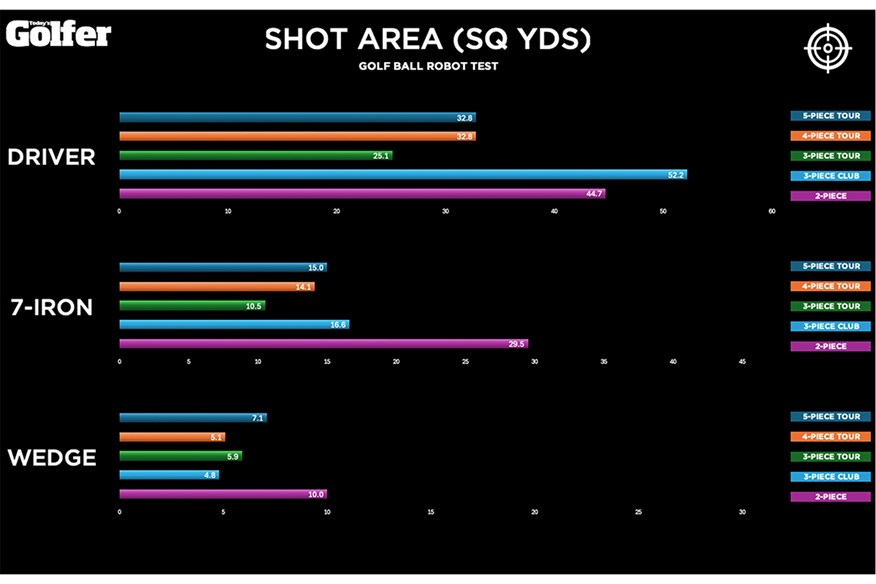
Averaged over three driver speeds, 7-iron and pitching wedge, the top three performers on test were the Seed SD-01, Titleist Pro V1, and the Callaway Chrome Tour X. The driver and 7-iron results for shot area provide some positive reading for the tour-level three-piece constructions, although we need to remember that some balls are designed to be shaped easier and could account for why they are more susceptible to deviate.
Other metrics
On the whole, launch angles, peak height, and descent angles were tightly grouped across all constructions, particularly with iron and wedge, suggesting backspin is a more useful indicator of which type of ball is more likely to produce greater stopping power. Four and five-piece models attained greater peak heights with a driver, helping to achieve greater carry distances when averaged across the three swing speeds.
| 2-pc Club | 3-pc Club | 3-pc Tour | 4-pc Tour | 5-pc Tour | |
| Driver Launch Angle (°) | 12.7 | 12.8 | 12.6 | 12.6 | 12.7 |
| Driver Height (yds) | 47.5 | 48.5 | 48.9 | 49.4 | 49.3 |
| Driver Descent Angle (°) | 30.2 | 31.2 | 31.2 | 31.6 | 31.6 |
| 7-Iron Launch Angle (°) | 21.0 | 21.0 | 20.8 | 20.7 | 20.7 |
| 7-Iron Height (yds) | 31.2 | 31.5 | 31.5 | 31.5 | 31.5 |
| 7-Iron Descent Angle (°) | 44.6 | 44.6 | 44.8 | 44.9 | 44.9 |
| Wedge Launch Angle (°) | 28.9 | 29.2 | 29.0 | 28.9 | 29.0 |
| Wedge Height (yds) | 20.3 | 20.5 | 20.6 | 20.6 | 20.6 |
| Wedge Descent Angle (°) | 47.7 | 48.1 | 48.1 | 48.0 | 48.2 |
Final Verdict: What have we learned?
Comparing the performance characteristics of golf ball constructions has been a useful exercise to help inform where meaningful differences may exist with increasing numbers of layers. Of course, our data is presented as averages and therefore exceptions to any rules will certainly exist. It’s why this information is best used as a guide before digging down to see just how well the specific model you have in mind meets your requirements.
Here are some of the messages we took from this comparative data.
X is generally best
If you are in the market for a premium tour-level ball, the data highlights that firmer ‘X’ labeled models outperform their softer siblings across the board in most cases. Check out our Titleist Pro V1 vs Pro V1x head-to-head as a case in point. Unless you put a premium on feel and genuinely believe you can notice a difference between three and four-piece constructions, then X models could well provide you with an extra degree of scoreability.
Think outside the box
Direct-to-consumer brands are becoming increasingly popular, not just for their price point, but for their extremely competitive performance against the traditional retail powerhouses. This data has shown how Snell, Seed, and Vice may not quite rival the all-round performance of a Pro V1 for example, but they more than hold their own in certain areas. Think about your game and where a small compromise could be worth it to make a big difference in your pocket.
Two-piece or not two-piece?
The urethane-covered Snell Prime 2.0 has really grabbed our attention in this year’s testing based on its iron and wedge spin performance. We believe sacrificing a touch of distance for added stopping power on the greens is absolutely a price worth paying. If your swing speed is anywhere close to average, think about ditching the more expensive tour-level or club golfer balls and look at 2-piece. While urethane-covered two-piece balls may not be commonplace yet, watch this space, as we expect the Prime 2.0’s credentials won’t go under the radar for long.
